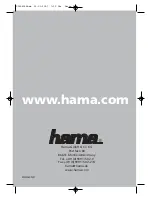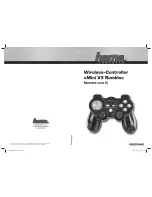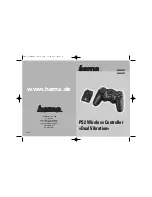
2. Use air pressure to remove spring preload by partially
stroking the actuator. If the diaphragm (14) is ruptured,
replace as instructed in the previous section.
3. To remove the socket shoulder screw (8) (or socket cap
screw in QP1) that holds the clevis (7) to the driver arm
(3), first apply some heat to the lower arm to loosen the
Loctite® on threads of the socket shoulder screw.
4. Slowly increase air pressure until the driver arm (3)
moves slightly off the stop screw (19). Remove the
socket shoulder screw (8).
5. Slowly relieve the air pressure in the actuator. The clevis
(7) should be set against the spring retainer (30), and
positioned symmetrically about the slot in the spring
housing.
6. Shut off and bleed the air pressure to zero. Disconnect
the air lines.
7. Remove the hex head screws (25) and (27), and hex
nuts (29) holding the diaphragm casing and spring
housing together.
8. Lift off the diaphragm casing (15), diaphragm (14)
and diaphragm retainer (10). Inspect the diaphragm
and guide buttons (64) for signs of wear, rupture or
mechanical damage.
9. Inspect the inside of both the diaphragm casing and
spring housing, as well as the outside of the diaphragm
retainer for any rough spots or foreign matter which
may cause abrasion of the diaphragm.
10. Lift the entire spring cartridge out of the unit.
WARNING: DISASSEMBLY OF THE SPRING PACKAGE
SHOULD NOT BE ATTEMPTED. SPECIAL EQUIPMENT IS
REQUIRED. DISASSEMBLY OF THE SPRING PACKAGE MAY
RESULT IN SERIOUS PERSONAL INJURY.IF MAINTENANCE
IS REQUIRED SHIP THE ENTIRE ACTUATOR TO
JAMESBURY
.
It is usually not necessary to remove the spring housing
(32) from the body (1). However, if removal is required, heat
must be used to loosen the Loctite. When reassembling, the
information in (Table 3), torque and Loctite recommendations
must be met. All fasteners should use Loctite 271 on the
threads. Inspect and clean all components.
Good practice dictates that all bearings should be removed
and replaced. See the SERVICE KIT section of this IMO for
the proper actuator series repair kit number.
3.2
Assembly
To aid assembly, spread light oil or grease on the outside
diameter of the new bearings.
1. Press driver arm bearings (6) into the body (1) and
covers (5).This is best done in an arbor press, but a
vise could be used if care is taken not to damage the
bearing. Driver arm bearings are to be pressed in until
they are flush or 0.015 in.(0.38 mm) below the body
counterbore or the inside cover surface. Press clevis
bearings (62) into the clevis (7).
2. Apply grease (Molykote GN grease) to inside of bearings
for the driver arm, but not for the clevis. The shoulder
screw (8) barrel needs to be greased instead.
3. Place the thrust bearing (31) into the counterbore in the
body of QP2-QP6 actuators. Slide the other thrust bearing
onto the trunnion of the driver arm (3). In the case of QP1,
assemble the lower cover (5) using the socket flat head
screws (21). Slide the thrust bearings onto the driver arm
at each end. Place the driver in the body.
4. Apply a good grade of grease to the O.D. of the outer
spring (43). Lower the spring cartridge into the spring
housing (32). Make sure that the spring package is not
resting on the hex head cap screws (38) which hold the
spring housing and body together.
5. Place the diaphragm retainer (10) with the new guide
buttons on the diaphragm plate (65).The orientation of
the diaphragm retainer should be such that the guide
button must be contacting the spring housing. Place
the new diaphragm (14) on the diaphragm plate. Put
the diaphragm casing (15) on and line up all the holes.
Do not pinch or stretch the diaphragm.
6. Insert the hex head bolts (25) and (27) in all holes,
(four are reversed for handling on the QP6; two
are reversed on QP1 - QP5). Do not force the bolts
through the diaphragm. Install nuts (29) and tighten
uniformly using the standard practice of tightening
diametrically opposite bolts in sequence. Follow
(Table 3) for tightening torques.
7. Connect a regulated air supply to the pressure port
and slowly increase the air pressure until the holes in
the clevis and driver arm are aligned. Turn clevis a few
degrees, if required, to align holes.
8. Apply Loctite 271 on the threads of the shoulder screw.
Insert it through the driver arm and clevis. Tighten per
(Table 3).
(continued on page 7)
TABLE 3
Torque Requirements
Required Tightening Torques In FT•LBS (N•m)
For Various Fasteners
QP1
QP2
QP3
QP4
QP5
QP6
Nuts for Hex
Head Screws
thru Diaphragm
Casing (29)
18
(24)
18
(24)
18
(24)
18
(24)
18
(24)
16
(22)
Socket Head
Cover Screws (21)
15
(21)
15
(21)
15
(21)
15
(21)
33
(21)
33
(21)
Socket Head
Shoulder Screw (8)
35
(48)
55
(75)
132
(179)
132
(179)
132
(179)
215
(292)
Nuts on Actuator
Rod (74)
55
(74)
55
(75)
88
(119)
132
(176)
176
(239)
215
(292)
Hex Head Screws
between Body and
Spring Housing (38)
—
18
(24)
30
(40)
30
(40)
55
(75)
55
(75)
Nuts for Socket
Head Screws
between Body and
Spring Housing (39)
5
(7)
—
—
—
—
—
IMO 11/17
IMO-031 EN
5
Содержание Quadra-Powr II
Страница 10: ...IMO 11 17 10 IMO 031 EN ...
Страница 11: ...IMO 11 17 IMO 031 EN 11 ...






























